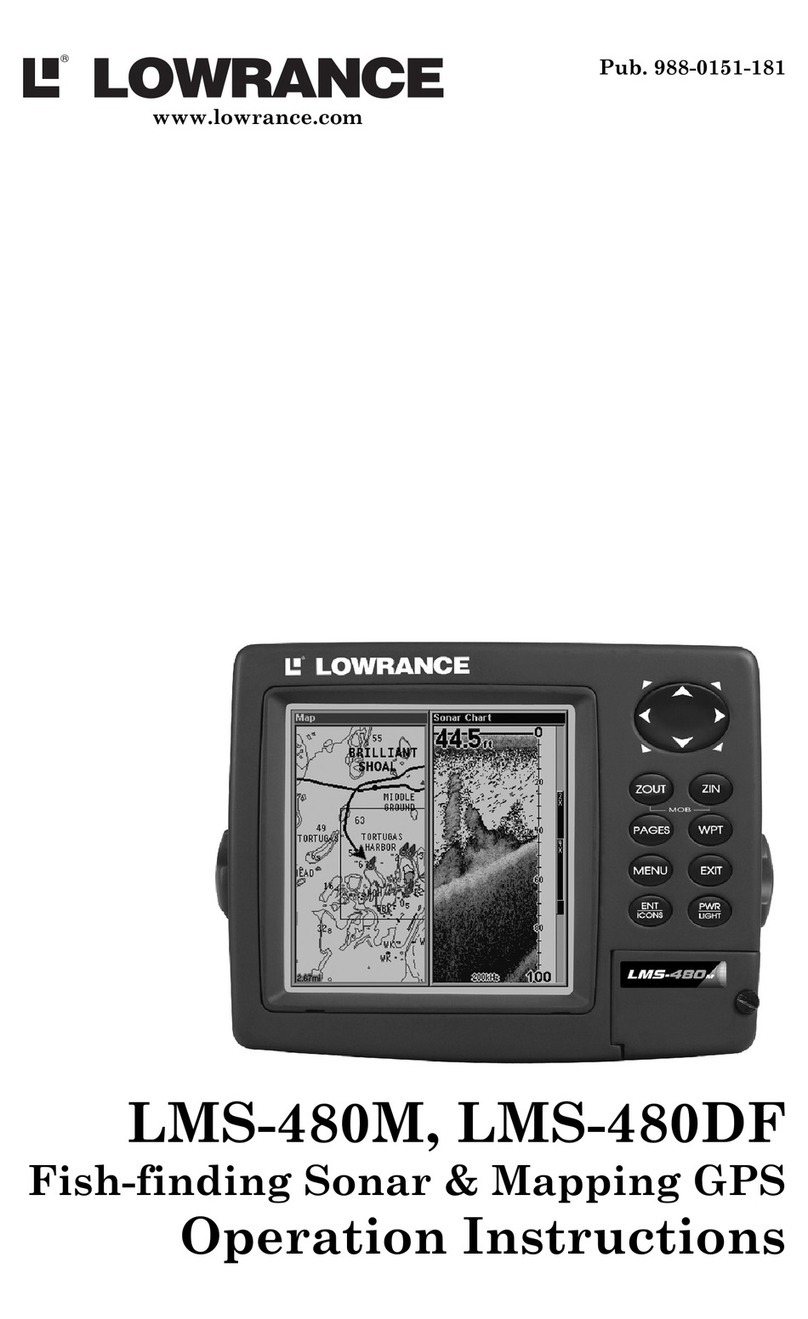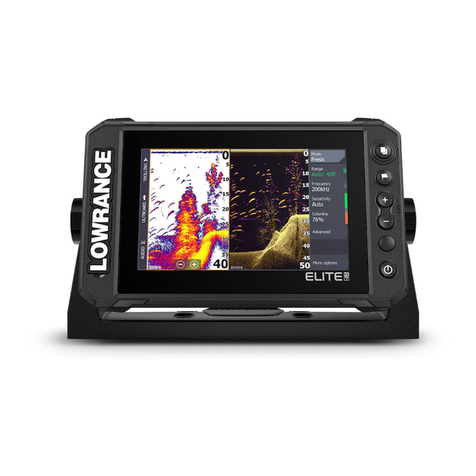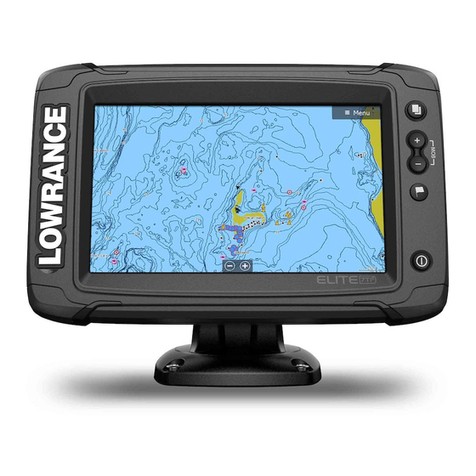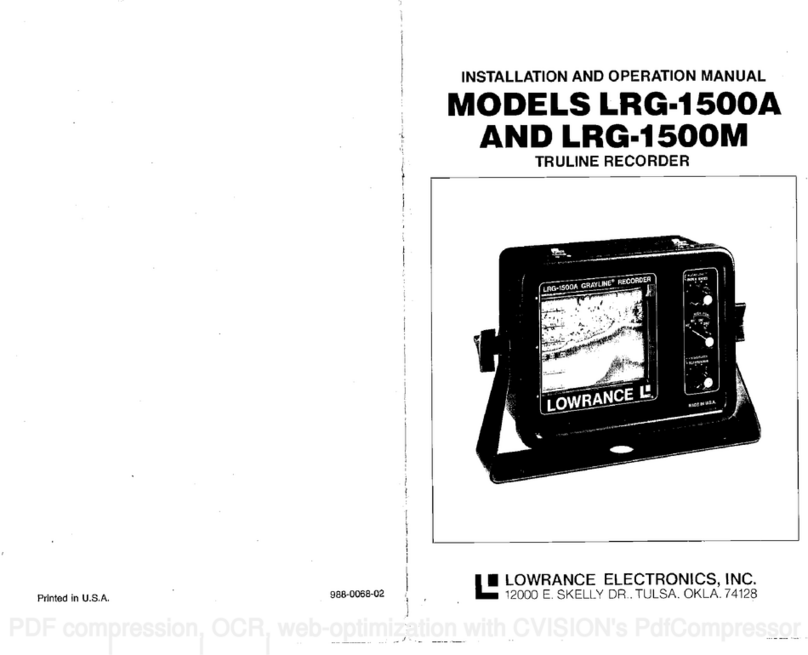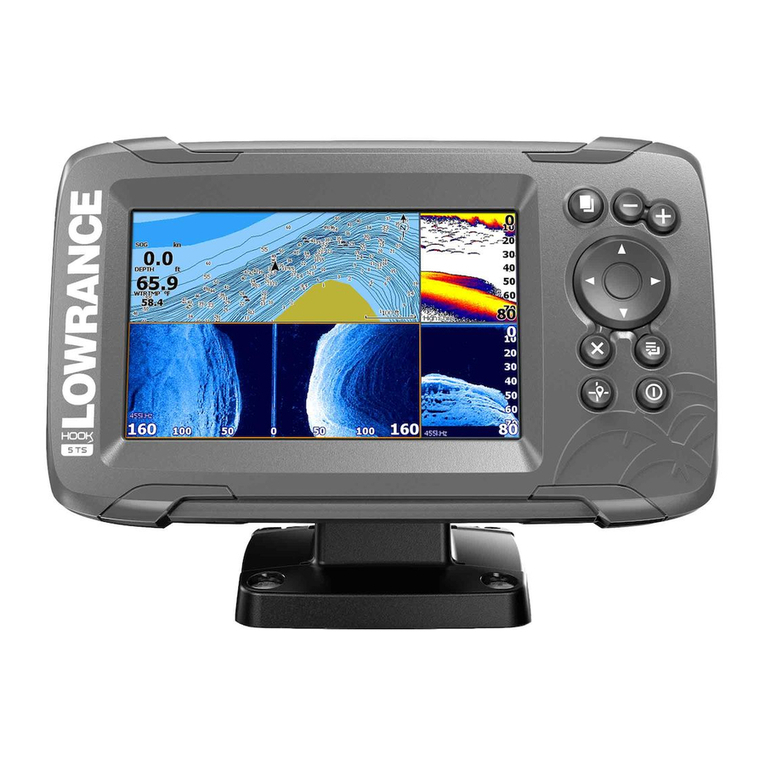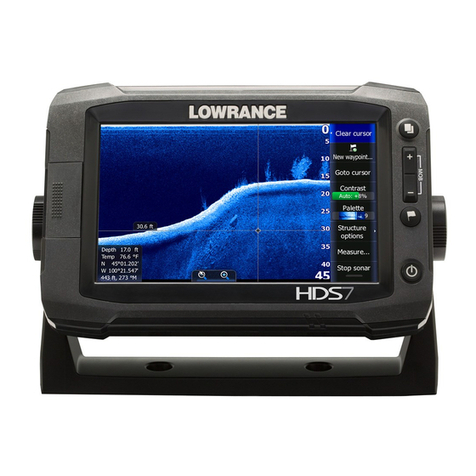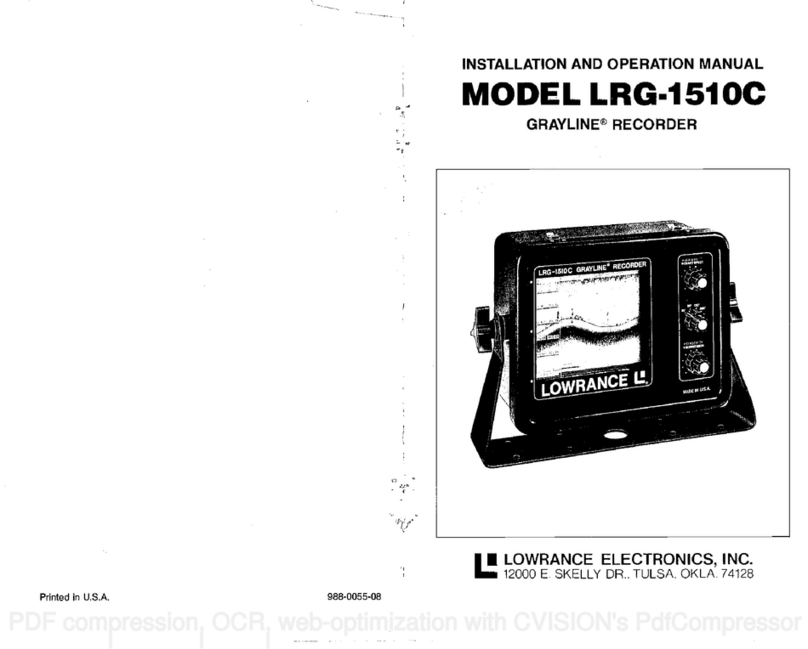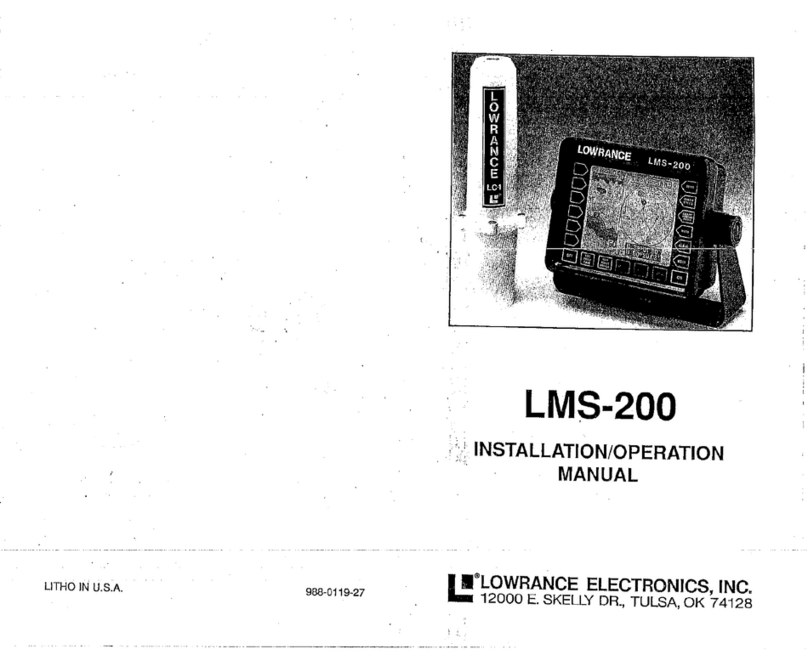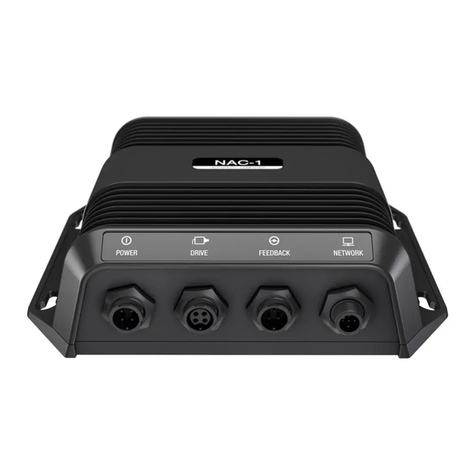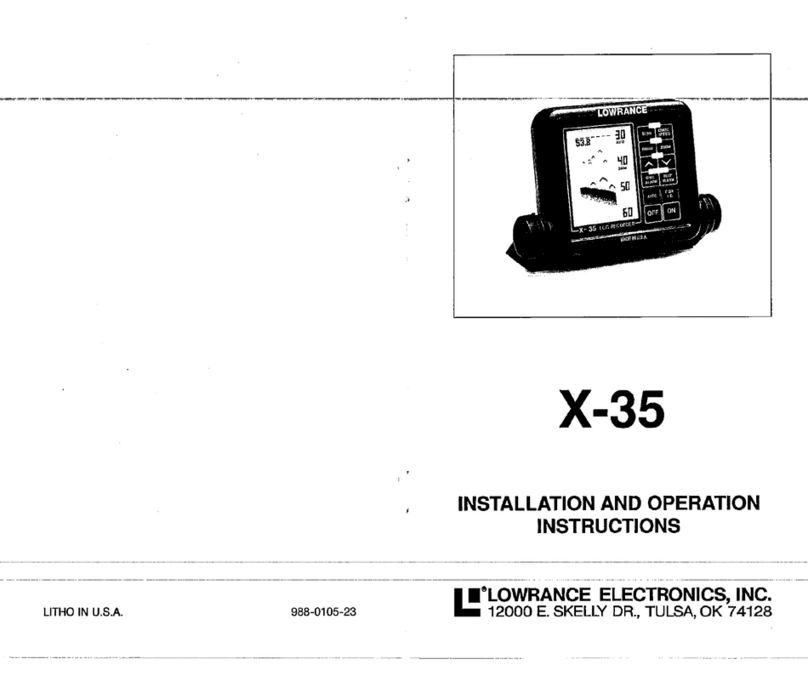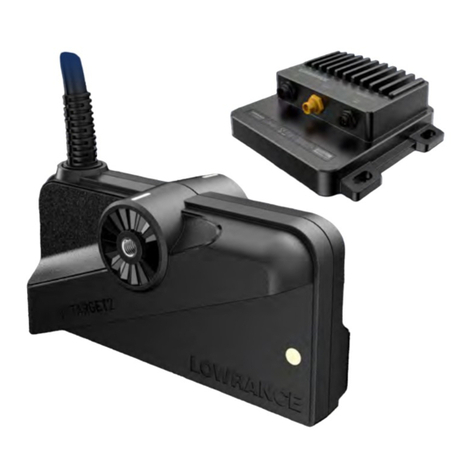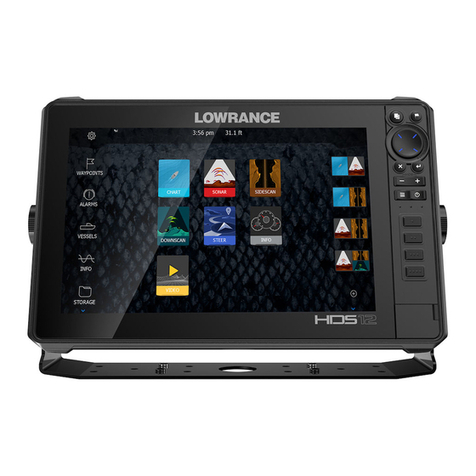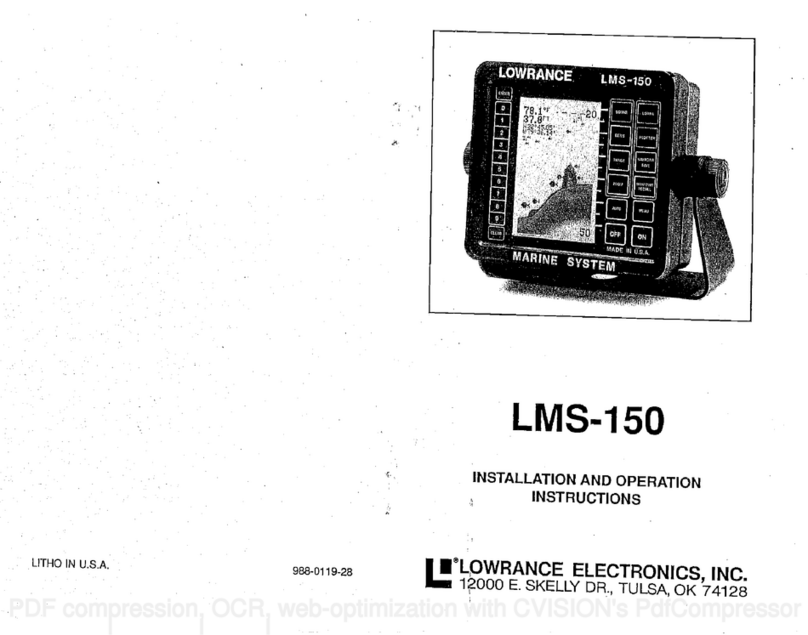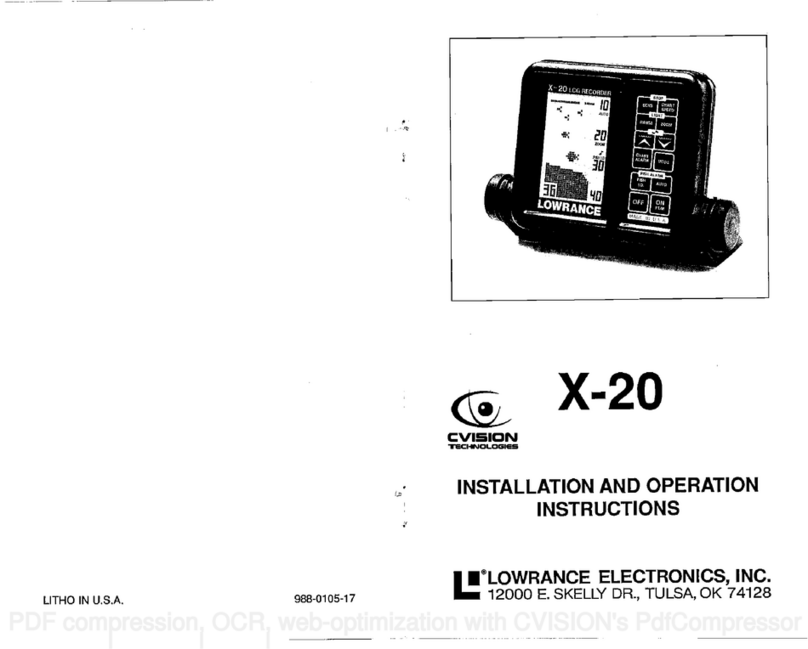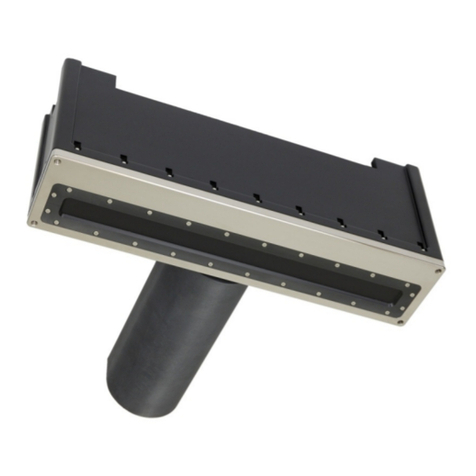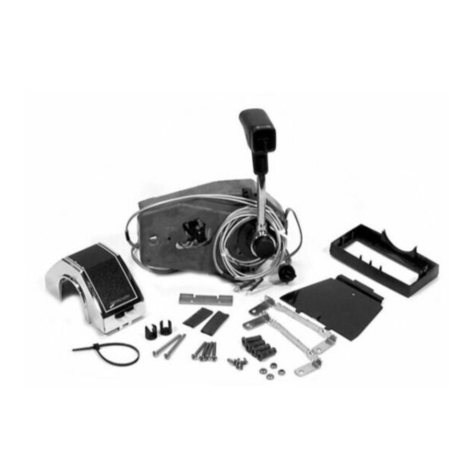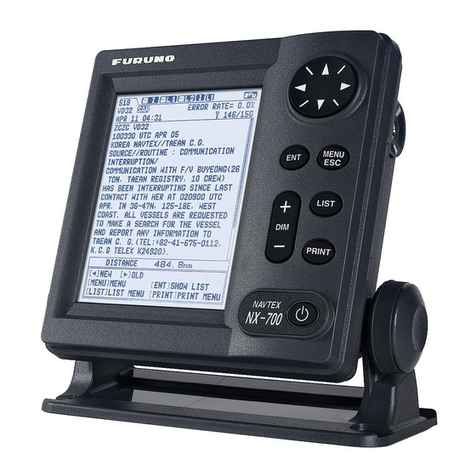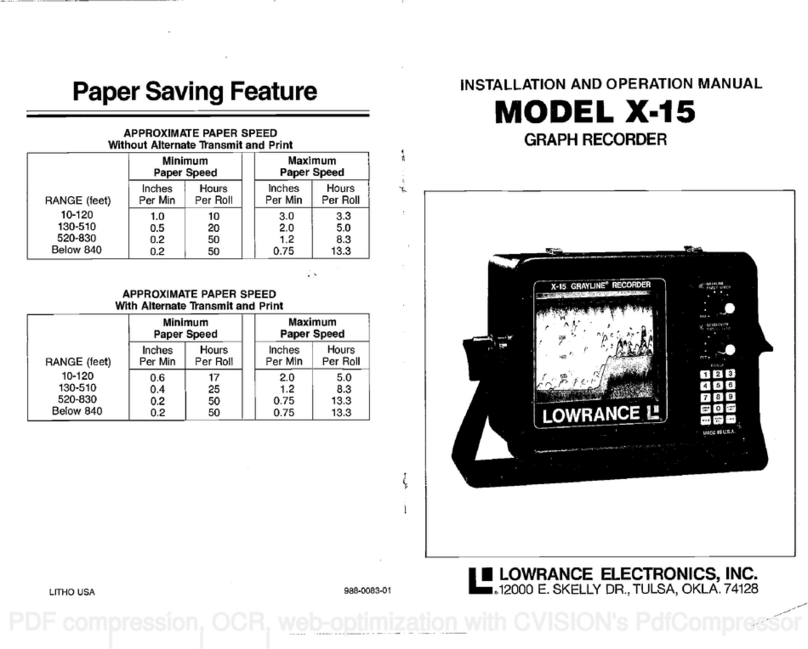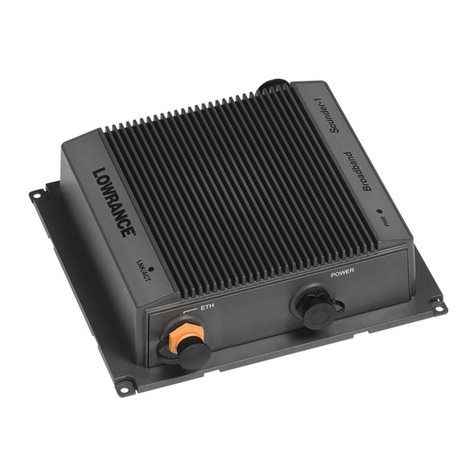
used onallthe Lowrance's vari-
able suppressionflashers and
graphs. Basically,itworks on the
principlethat most noisepulses
are ofrelatively shortduration. It
the receiver circuit canbead-
justed
so thatitwillacceptonly
long pulses, then the shortpulses
will be cancelled out, and only the
desired information (fish, bottom,
structure, etc.) will bedisplayed.
Of course, thetransmitter's pulse
width would have to be increased
atthesame time sothatthe return
echoeswould beaccepted bythe
receiver.
This isexactly whatthe Low-
rance suppressionsystem does.
Thetransmitter's pulse width is in-
creased bythe frontpanel sup-
pression control, and thereceiver
'tracks" the amount ofincreased
pulsewidth, cancelling outany
narrow noise pulses, and display-
ing only the returnechoesfrom
fishorthebottom, etc.(Note: Re-
ceiver sensitivity is notdiminished
atallbythis process.)
Theonly disadvantage tothis
system isresolution, or theability
toseparate targets, isdiminished
whenthe pulsewidthis in-
creased. A200 ps (micro-sec-
ond)transmitter pulse
width used
ontheX-1550 when
powerisfirst
turned on, willallowthe unitto
display two fishortargets
thatare
only 6inches apart. Inother
words, iftwofish thatare six
inchesapart aredisplayed onthe
graph paper,theywill show up as
twoseparate arches whenthe
transmitter isoperating with a200
ps pulse width. Now, ifwein-
crease thetransmitter pulse
width
to400 Ps, (byrotating theSup-
pressorcontrol clockwise) those
same twofish archeswill blend
together andshowupas one fish
orpossibly even a "blob" onthe
paper.
Witha400 tts transmit
pulse
width, those same two fishwill
have to be at least12 inches apart
beforetheywill show upas two
separate arches onthegraph.
Thisiswhy itis important to leave
the Suppressor control turned
downto minimum when looking
forfish.
However,itishelpful sometimes
tohavelongerpulse widths when
noise isnotaconcern. When
using a sonar in deeper water, it is
easier forthe unittodetecta
longerpulsecoming backfromthe
bottom orfromthefish. Thisis
called "Probability of Echo Detec-
tion."Theprobability ofthe unit
being abletodetectan echore-
turning from deep waterisdi-
minished because thefurther the
sound pulse hastotravel, the
weakeritbecomes. By broadening
the pulsewidth, in essence, a
largersignal istransmitted and it
is easier forthe receiver todetectit.
Forthisreason, themicrocom-
puterin theX-1550 automatically
increases theinitial pulse widthof
theunit asdeeper lowerlimIts are
setby theoperator.(Note: Initial
pulse
width isthepulse
widthof
the unitwhentheSuppressor
control isturned tominimum.)
INITIAL
TRANSMIT
LOWER PULSE
LIMIT WIDTH
(Feet) (Micro-seconds)
10 110
20 130
30 160
40-200 200
From 210 feetto600feet,
theinitialpulse
width increases at
thesame rateas thedepth. For
Figure 2
Thestylus continues to move
down theedge ofthe paper
while
thesound pulse istraveling
through thewater,and whenan
echo isdetected, thestylus makes
another mark onthepaper. The
depth ofthe object which reflected
the echo can be read infeet by
comparing its locationon the
paper to the depth scale printed
onthe paper.
Avariable speed motor drives
the paper graph. (The paperis
treated sothatthe stylus will burn
itto leavea
permanent
black
mark.) During one revolution of
thestylus belt, averynarrow mark
will be made bythe flexible stylus,
butthe paper will move asmall
amount beforethe next revolution.
Each mark will blend into the one
before, so that acomposite "pic-
ture"ofthetarget will be made,
onetiny mark atatime.
Duetothe manyfeaturesthat
this unit has,wehavesplitthe
operation section ofthismanual
intotwo sections. Thefirstsec-
tion,Section III, isentitled "Basic
Operation" andcovers everything
that isabsolutely necessary to
usethe X-1550isawidevariety
0 ofsituations. Itwilltellyou howto
usethebasic controls —Sen-
sitivity,Suppressor, PaperSpeed,
Grayline, Range, plus afew
spe-
cialfunctions.
Thissection will beadequate
for most situations. However,
onceyouhave mastered the ba-
sicoperation oftheX-1550 as de-
scribed inSection III, you may
wishtotrysome ofthefeatures
described inSection VI—Ad-
vanced Operation. Thischapter
will explain fourotherfeatures
thatwill enable theserious
operator
to get
themaximum use
outofthisequipment.
Weurgeyou to read thisman-
ualthoroughly and familiarize
yourself withthe controls. Al-
though this is avery advanced
unit, it iseasyto use, thanksto
the powerofthe microcomputer
and thefrontpanel controls.
Should yourequire extrahelp,
please phone ourCustomer Ser-
vice Department toll freeat
1-800-331-3889.(Oklahoma resi-
dents call collect -1-918-437-
6881).Aservicerepresentative will
be happy to helpyou.
II INSTALLATION
Mounting —
The depth sounder maybe in-
stalled in anyconvenient area,
provided the unitcan betiltedfor
the bestviewingangle. Fourholes
in thebracket base allowwood
screw orboltmounting. Awood
stiffener
maybe required on the
GRAPH
PAPER
-—---- PAPER QJ—PULLEV
TRAVEL
18 3
PDF compression, OCR, web-optimization with CVISION's PdfCompressor
